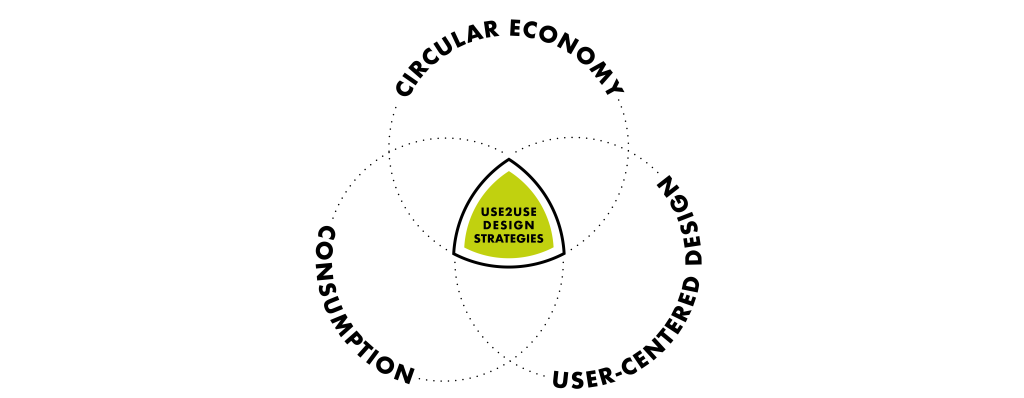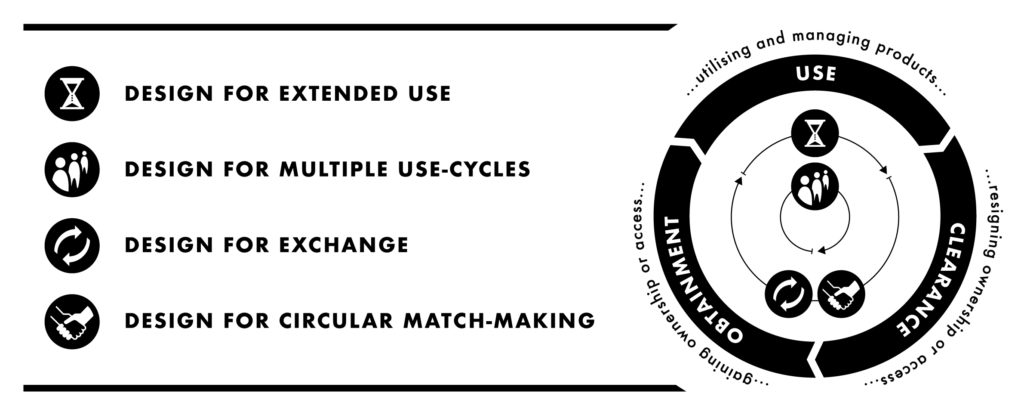When insight about people’s consumption processes is taken as the point of departure for product and service design, new opportunities to increase product lifetime, product utilisation, and reuse can be identified. These opportunities reside in the intersection of three fields: circular economy, consumption, and user-centered design.

We would like to highlight four main design strategies that can be used to make circular consumption processes more preferable to people: Design for Extended Use, Design for Multiple Use-Cycles, Design for Exchange, and Design for Circular Match-Making. These strategies have the potential to not only increase product utilisation but also people’s need fulfilment. The strategies address different types of challenges, point to a variety of design opportunities, and are related to different phases of people’s consumption processes.

The strategy Design for Extended Use addresses challenges associated with a product’s lowered utility, attractiveness, and potential to fulfil user needs over time. It highlights opportunities to make products last longer and be useful and attractive to people for a prolonged time.
When products are circulated through multiple use-cycles and used by a sequence of users, additional design challenges can be identified. For example, challenges that are associated with diverse user needs, shortened use-cycles, and long product histories, can be tackled with the strategy Design for Multiple Use-Cycles. Addressing these challenges can help make each new circular consumption process relevant and attractive for people.
A user-centered approach also highlights the importance of facilitating people’s obtainment and clearance processes, i.e. facilitating the process of product exchange. Practicalities that are, say, related to assessing pre-used products and circular offers, carrying out a product exchange, and re-activating products stuck in disuse limbo, can be addressed with the strategy Design for Exchange.
Apart from facilitating the obtainment and clearance processes, one can also address design challenges related to the interactions between two subsequent users using the strategy Design for Circular Match-Making. This strategy deals with opportunities to help people communicate, trust each other, and make and compare deals.